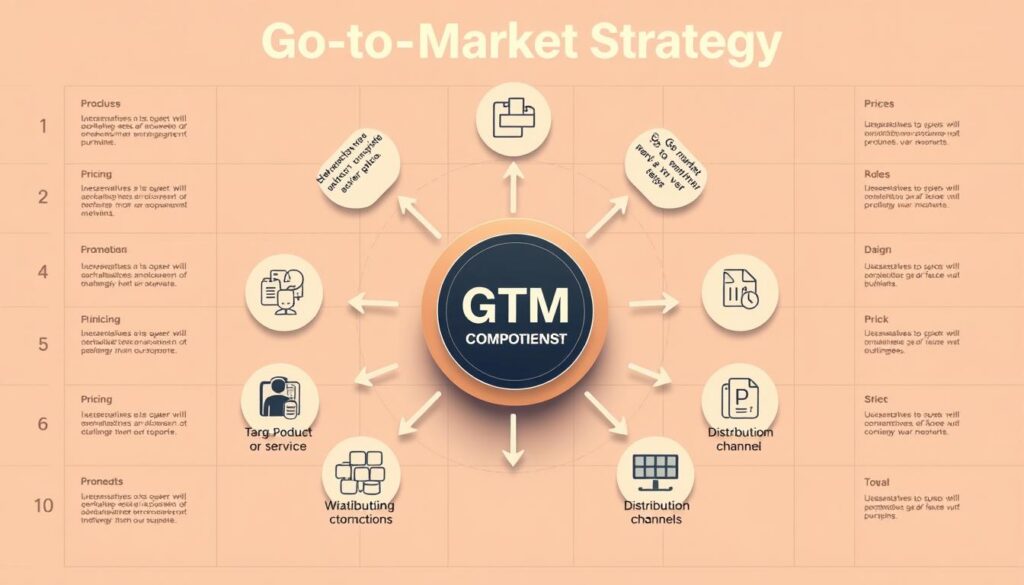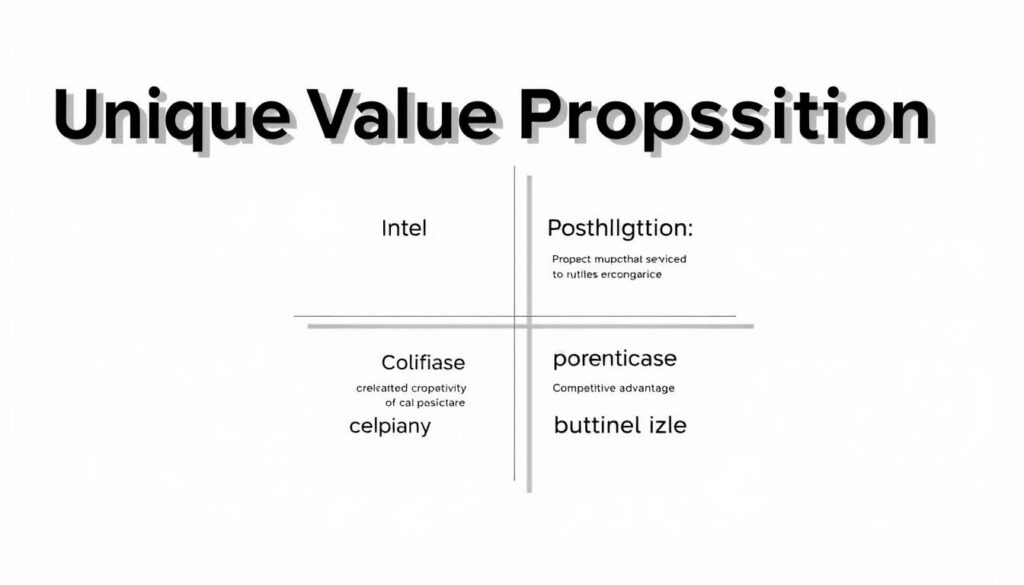A successful product launch requires more than just creative marketing. It demands a strategic blueprint that aligns every aspect of a business—from development to distribution—with the needs of its audience. This approach, often called a go-to-market strategy, acts as the connective tissue between a company’s offerings and the realities of competitive markets.
Modern organizations face a critical challenge: creating differentiated value in crowded industries. Effective strategies merge product positioning with customer insights, ensuring new solutions address genuine pain points. Cross-functional alignment—between teams like sales, product management, and customer support—transforms isolated efforts into cohesive campaigns that drive measurable results.
Traditional promotional tactics no longer suffice in today’s dynamic markets. Businesses must adapt pricing models, distribution channels, and messaging frameworks to shifting consumer behaviors while maintaining brand consistency. For example, companies implementing strategies to accelerate business growth often prioritize real-time data analysis to refine their market entry plans.
Key Takeaways
- Align product positioning with customer expectations and competitive landscapes
- Integrate cross-departmental insights for cohesive launch execution
- Balance adaptable tactics with consistent brand messaging
- Prioritize data-driven adjustments throughout market entry phases
- Establish clear differentiation through tailored value propositions
Introduction: Setting the Stage for Business Growth
Strategic planning separates industry leaders from competitors struggling to gain traction. While innovative features capture attention, a successful product launch hinges on aligning organizational strengths with unmet customer needs. This alignment becomes critical when bringing product ideas to dynamic markets where consumer preferences shift rapidly.
Modern companies face dual pressures: speed and precision. Launching new offerings without thorough validation risks financial losses and eroded brand trust. A structured market strategy acts as scaffolding—providing clear milestones for teams while allowing adjustments based on real-time feedback.
Three critical advantages emerge from disciplined GTM approaches:
- Risk mitigation: 68% of failed launches stem from misaligned team priorities
- Faster scaling: Cross-functional coordination reduces time-to-revenue by 40%
- Sustainable growth: Customer-centric positioning drives 3x higher retention rates
Organizations that master this balance see consistent results. For example, SaaS providers using data-driven GTM frameworks achieve 22% faster market penetration than peers relying on intuition alone. The key lies in treating product introductions as collaborative processes—not isolated events.
Understanding the Basics of a Go-to-Market Strategy
Launching a product without a strategic framework is like navigating without a map—possible, but prone to costly detours. A robust approach bridges the gap between development teams and customer expectations, transforming ideas into market-ready solutions.

Defining Key Components
Five pillars form the foundation of every effective market strategy. First, precise market definition identifies specific segments where your product service solves urgent problems. Second, customer analysis digs deeper than demographics to uncover buying motivations and organizational influences in B2B environments.
Third, distribution models dictate profitability. Companies must choose between direct sales or third-party partnerships based on cost structures. Fourth, messaging must articulate unique value without jargon—clarity drives conversions. Finally, pricing strategies require balancing competitiveness with sustainable margins.
The Role of Cross-Functional Alignment
Product marketing teams often lead GTM strategy execution because success demands synchronized efforts across departments. Engineering timelines must align with promotional calendars, while sales enablement materials should mirror customer success protocols.
This coordination prevents mixed messages during new product launches. For instance, using AI-driven marketing tools helps maintain message consistency across channels while allowing real-time adjustments based on performance data.
Defining Your Target Audience and Identifying Pain Points
Navigating B2B purchasing decisions demands more than surface-level demographic data. Harvard Business Review reveals 6.8 stakeholders typically influence each sale—a web of roles from budget holders to end users. This complexity reshapes how teams approach target audience definition.
Mapping Customer Personas
Effective persona development dissects each stakeholder’s priorities. Decision makers prioritize ROI, while users focus on workflow integration. Gatekeepers often resist change to protect existing systems. A structured analysis uncovers these hidden pain points driving organizational behavior.
| Stakeholder Role | Primary Concern | Influence Level |
|---|---|---|
| Initiator | Problem identification | Low |
| Decision Maker | Budget alignment | High |
| User | Daily functionality | Medium |
| Gatekeeper | Process continuity | Critical |
Addressing Buyer Challenges
Tailored messaging bridges conflicting priorities. For example, case studies demonstrating 23% faster workflows satisfy user needs, while ROI calculators appeal to financial approvers. This dual approach resolves pain points across the decision chain.
Successful teams map content to specific buyer journey stages. Early-phase materials might educate initiators, while late-stage tools help decision makers justify purchases. This precision converts potential customers by addressing unspoken operational fears.
Aligning Product Positioning with Your Unique Value Proposition
Positioning a product effectively demands more than listing features—it requires demonstrating how your solution becomes indispensable to specific market segments. The value matrix framework bridges this gap by connecting buyer personas to measurable outcomes they care about most.

Communicating What Makes You Different
Successful product marketing distinguishes between “painkiller” solutions solving urgent needs and “vitamin” enhancements offering optional benefits. A software platform reducing compliance fines by 47% acts as pain relief, while one offering minor workflow tweaks remains a vitamin.
The matrix methodology maps each decision-maker’s priorities to your product service capabilities. For example:
- CFOs see value in cost reduction metrics
- IT managers prioritize integration ease
- End-users need frictionless adoption
This approach prevents generic messaging. Instead of claiming “advanced analytics,” demonstrate how your tool helped a manufacturer cut machine downtime by 32%. Concrete outcomes make unique value propositions tangible across the buying committee.
Teams should validate positioning through competitive battlecards comparing strengths against three key rivals. This reveals where your product dominates the market—and where competitors hold advantages requiring strategic counter-messaging.
Conducting Comprehensive Market and Competitive Analysis
Uncovering hidden opportunities in crowded markets begins with strategic analysis that maps industry shifts to customer needs. Organizations often underestimate how emerging technologies or regulatory changes reshape buyer priorities, leaving gaps competitors can exploit.
Examining Market Trends and Opportunities
Effective analysis combines three lenses: competitor capabilities, ideal customer behavior patterns, and macroeconomic forces. For example, 72% of B2B buyers now prioritize vendors offering personalized onboarding—a trend overlooked by 58% of enterprises in recent surveys.
| Analysis Layer | Key Questions | Impact on Strategy |
|---|---|---|
| Competitor Offerings | What features do rivals emphasize? How do pricing models compare? | Identifies differentiation opportunities |
| Customer Workflows | Where do current solutions create friction? What workarounds exist? | Reveals unmet needs for innovation |
| Market Forces | How might new regulations or technologies alter demand? | Guards against future disruptions |
Advanced teams track product market saturation through metrics like:
- Customer acquisition cost trends across segments
- Feature adoption rates in competitor products
- Third-party review sentiment analysis
This approach builds competitive advantage by aligning development with tangible gaps. When a SaaS provider discovered 41% of prospects struggled with legacy system integration, they redesigned their API—capturing 17% market share in six months.
Crafting a Compelling Brand Message for a Successful Launch
The final hurdle in product introduction lies in messaging precision. Even exceptional solutions falter when communications fail to connect. A successful product launch demands frameworks that translate technical capabilities into relatable benefits.
Developing a Messaging Framework
Effective product marketing begins with structured message hierarchies. Start by anchoring communications to core value propositions—clear statements explaining why your solution outperforms alternatives. Layer supporting evidence like case studies or performance metrics beneath this foundation.
Consistency matters across channels, but customization drives impact. Sales teams might emphasize cost savings, while support materials highlight ease of integration. This balance ensures unified positioning without robotic repetition.
Testing and Refining Your Messaging
Data trumps intuition in message optimization. Run controlled tests across platforms like LinkedIn and Google Ads, varying three elements: audience segments, channel selection, and value emphasis. Track which combinations drive engagement and conversions.
Refinement cycles reveal hidden insights. A new product campaign might discover IT managers respond best to security statistics, while executives prefer ROI projections. These findings shape create effective follow-up strategies across the buyer journey.
FAQ
How does cross-functional alignment impact go-to-market success?
Cross-functional alignment ensures marketing, sales, and product teams share unified objectives and metrics. This coordination reduces friction in sales cycles and creates consistent messaging across customer touchpoints, directly influencing customer acquisition costs and launch velocity.
What methods effectively identify customer pain points during market research?
Conducting in-depth interviews with ideal customer profiles and analyzing social media sentiment reveals unmet needs. Tools like HubSpot’s CRM analytics or SurveyMonkey help quantify these insights, enabling businesses to address specific challenges in their value proposition.
Why do competitive analysis frameworks matter for product positioning?
Frameworks like Porter’s Five Forces expose market gaps competitors overlook. This analysis helps refine unique value propositions by highlighting underserved customer segments or features that differentiate new products in saturated markets.
How should companies balance technical specifications with emotional appeals in messaging?
Successful brand narratives pair functional benefits with aspirational outcomes. Apple’s “Think Different” campaign demonstrates this balance – emphasizing technical superiority while connecting with users’ desire for innovation and self-expression.
What key performance indicators best measure go-to-market effectiveness?
Track customer acquisition cost ratios against lifetime value, sales cycle duration, and feature adoption rates. Tools like Google Analytics and Salesforce enable real-time monitoring of these metrics to optimize marketing strategies post-launch.
How does buyer journey mapping reduce customer acquisition costs?
Visualizing touchpoints from awareness to purchase exposes friction areas. Companies like Dropbox use this method to streamline onboarding processes, resulting in 60% faster conversion rates and improved customer retention through targeted content delivery.



